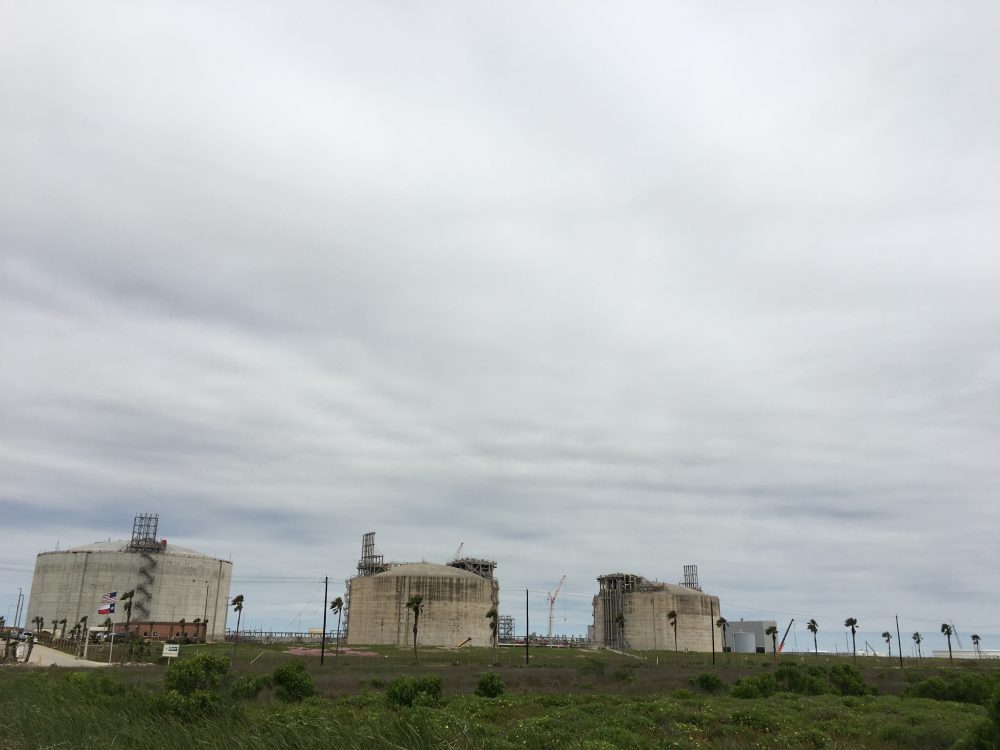Late last week, the Biden administration announced plans to ship more liquefied natural gas, or LNG, to the European Union. The Wall Street Journal reports that the U.S. plans to ship 50 billion cubic meters of LNG to the EU annually through the end of the decade.
The goal is to fill in gaps in gas supplies while the EU tries to wean itself off Russian energy, as Putin’s war in Ukraine now enters its second month.
While the U.S. may be the world’s top natural gas producer, the amount of energy it provides to Europe is unlikely to fully offset the region’s dependence on Russian supplies. Logistical constraints, like the number of available import and export terminals, means that the increase in flows to the EU will be “incremental,” according to Matt Smith, lead oil analyst for the Americas at Kpler. Listen to the interview above or read the transcript below.
This transcript has been edited lightly for clarity:
Texas Standard: As the U.S. strikes this deal to send more LNG to Europe, what does that actually mean?
Matt Smith: So the U.S. can send more in terms of the volume mentioned by President Biden, but it’s not because of the government’s intervention. It’s simply because of market conditions. So economics over the winter have pulled U.S. LNG away from the primary market that used to go primarily to Asia. But now it’s primarily going into Europe, and that’s something that will continue as long as prices are higher in Europe than they are in Asia.
Because of market forces, or because there’s a need for it, a little bit of both? What do you think is actually steering this economics?
Economics. It’s prices. The LNG will flow to the place which will pay the highest price for it, and that’s likely to be Europe, as it has been over this winter.
Can Texas supply these large amounts of LNG that that they need, or not so much?
Not to replace all of the Russian natural gas – two reasons, really. One, the U.S. simply isn’t able to, because its exports are already maxed out. And so it’s sending as much as it possibly can out. Now, it could build extra export capacity in the years ahead. But for this year, the increase is only going to be incremental.
But secondly, even if the U.S. could export more, Europe only has a certain amount of LNG import capacity, so it can’t classify everything that it needs. And so for the moment, it’s going to have a struggle trying to pivot away from Russian natural gas.
Will the U.S. be increasing oil supplies to the EU as well?
Yes. But again, like LNG, it’s going to be incremental. So the U.S. was already sending over a million barrels a day into Europe last year. And as U.S. production ticks higher, driven by Texan production growth, we should see flows tick higher to Europe. But again, economics are going to drive everything. So if Europe is willing to pay up for that crude oil that’s pulling away from Asia, then then exports will rise there.
What about the shipment capacity? I don’t think there’s any real question about the production capacity, right? Am I close on this oil question?
The U.S. has sufficient export capacity so it can export much more crude oil than it currently does, and so It can easily push out over five million barrels a day of exports. And typically now we see them about three – something like that. So there’s room for four more to leave.
Why so incremental, then? It seems like there’s been a little bit of pushback on the production side. I don’t quite understand that.
Well, with the production side, for the U.S., there’s a number of different speed bumps. The speed bumps coming through from labor shortages, equipment shortages, people even to just drive trucks. At the same time as well, these oil companies that are publicly traded have been much more inclined to pay dividends back to shareholders rather than invest in exploration and development.
Is there any light at the end of the tunnel on rising gas prices?
We’re seeing prices really coming off, which will mean that we’re moving away from record prices at the pump, but that’s because of widespread lockdowns in China. We’ve got Shanghai being locked down. You’ve got that energy demand concern there, which is ultimately pushing crude prices down, which pushed prices down the pump. But they’re still going to remain fairly elevated.














